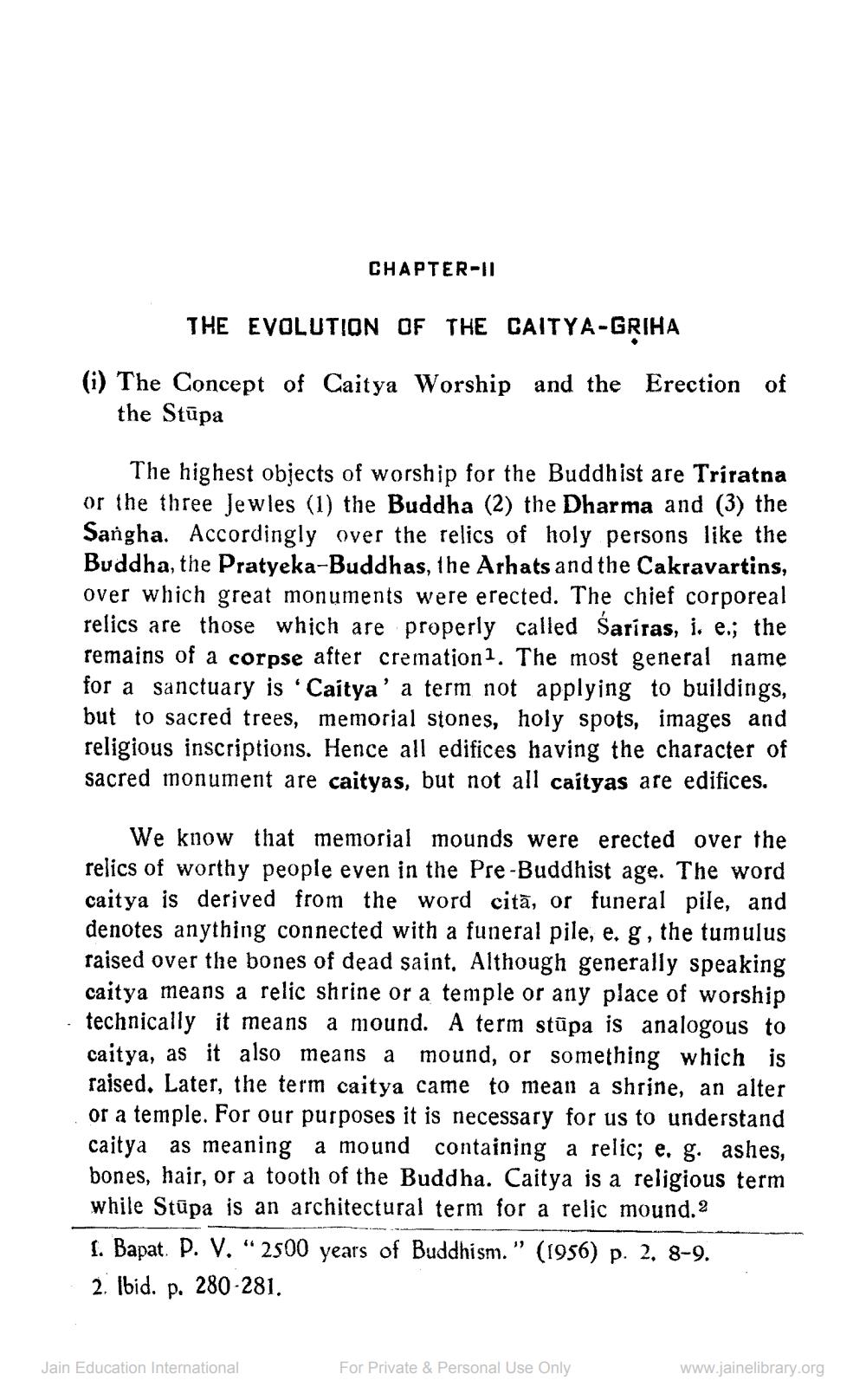________________
CHAPTER 11
THE EVOLUTION OF THE CAITYA-GRIHA
(i) The Concept of Caitya Worship and the Erection of
the Stūpa
The highest objects of worship for the Buddhist are Triratna or the three Jewles (1) the Buddha (2) the Dharma and (3) the Sangha. Accordingly over the relics of holy persons like the Buddha, the Pratyeka-Buddhas, the Arhats and the Cakravartins, over which great monuments were erected. The chief corporeal relics are those which are properly called Sariras, i. e.; the remains of a corpse after cremation 1. The most general name for a sanctuary is 'Caitya' a term not applying to buildings, but to sacred trees, memorial stones, holy spots, images and religious inscriptions. Hence all edifices having the character of sacred monument are caityas, but not all caityas are edifices.
We know that memorial mounds were erected over the relics of worthy people even in the Pre-Buddhist age. The word caitya is derived from the word citā, or funeral pile, and denotes anything connected with a funeral pile, e. g, the tumulus raised over the bones of dead saint. Although generally speaking caitya means a relic shrine or a temple or any place of worship technically it means a mound. A term stūpa is analogous to caitya, as it also means a mound, or something which is raised. Later, the term caitya came to mean a shrine, an alter or a temple. For our purposes it is necessary for us to understand caitya as meaning a mound containing a relic; e. g. ashes, bones, hair, or a tooth of the Buddha. Caitya is a religious term while Stūpa is an architectural term for a relic mound.2 1. Bapat. P. V. “2500 years of Buddhism." (1956) p. 2. 8-9. 2. Ibid. p. 280-281.
Jain Education International
For Private & Personal Use Only
www.jainelibrary.org




